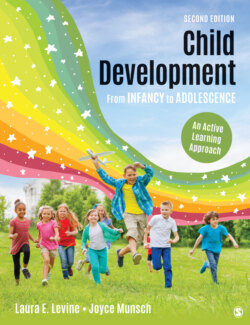Читать книгу Child Development From Infancy to Adolescence - Laura E. Levine - Страница 131
На сайте Литреса книга снята с продажи.
Dynamic Systems Theory
ОглавлениеAs the study of children has become increasingly sophisticated, researchers have realized that development is a complex process that includes the interaction of biology, the environment, the way we control ourselves and interact with others, and the way we think about, or represent, our experiences in our minds (Sameroff, 2010). Dynamic systems theory states that all these different aspects of development interact and affect each other over time. In this theory, development is more like a jazz improvisation than a written piece of music (Spencer, Perone, & Buss, 2011). Each part adjusts to every other part as the child seeks solutions for developmental problems that arise, and each child creates a unique pattern of behavior as a result.
Dynamic systems theory: The theory that all aspects of development interact and affect each other in a dynamic process over time.
To illustrate how this process works, we can look at how Esther Thelen applied the theory of dynamic systems to the development of motor skills. Thelen found that the nature of physical development was flexible, not absolute. For example, newborn babies have a stepping reflex in which they appear to be walking when held upright, even though they cannot support their own weight. This reflex typically disappears at about 2 to 3 months of age, and the disappearance was initially thought to be a product of brain maturation. However, Thelen found that these babies will begin stepping again if placed up to their chests in water so their legs are not so heavy, which means the disappearance of this reflex is not driven solely by brain development (Thelen, 1989). Infants stop “stepping” reflexively when their legs become too heavy for them to lift.
The stepping reflex. The stepping reflex is present in young infants. If you support their weight and allow their feet to touch a flat surface, they will raise and lower their legs as though they are walking. What causes babies to lose this reflex?
Jennie Woodcock; Reflections Photolibrary/Corbis
